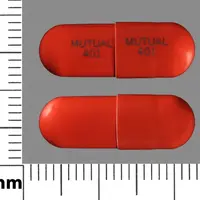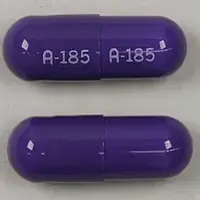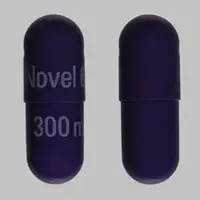Generic name: tigan
Availability: Prescription only
Pregnancy & Lactation: Risk data available
Brand names: Tigan (oral/injection), Trimethobenzamide (oral/injection)
What is Trimethobenzamide (monograph)?
Introduction
Antiemetic agent.
Uses for Trimethobenzamide
Nausea and Vomiting
Control of nausea and vomiting, including treatment of postoperative nausea and vomiting.
Treatment of nausea associated with gastroenteritis.
Less effective than phenothiazines, but may be associated with fewer adverse effects.
Trimethobenzamide Dosage and Administration
Administration
Administer orally or by IM injection.
Not recommendedfor IV administration.
Preparation for rectal administration is no longer commercially available in the US; FDA has withdrawn approval of the new drug application (NDA) for the rectal suppositories because of lack of substantial evidence of efficacy. (See Preparations.)
IM Administration
Minimize local adverse effects by injecting deep into the upper outer quadrant of the gluteus maximus; avoid local infiltration of the solution along the needle track.
Dosage
Available as trimethobenzamide hydrochloride; dosage expressed in terms of the salt.
Pediatric Patients
Nausea and Vomiting
Oral
Children weighing 13.6–45 kg: 100 or 200 mg 3 or 4 times daily; alternatively, children may receive 15–20 mg/kg daily given in 3 or 4 divided doses. However, suitable oral dosage forms are no longer commercially available in the US.
Adults
Nausea and Vomiting
Oral
Usual dosage: 300 mg 3 or 4 times daily. Adjust dosage according to indication for use, severity of symptoms, and patient response.
IM
Usual dosage: 200 mg 3 or 4 times daily. Adjust dosage according to indication for use, severity of symptoms, and patient response.
Special Populations
No special population dosage recommendations at this time.
Related/similar drugs
hydroxyzine, ondansetron, lorazepam, meclizine, Benadryl, promethazineWarnings
Contraindications
-
Known hypersensitivity to trimethobenzamide.
-
Injection contraindicated in children.
Warnings/Precautions
Warnings
CNS Depression
May impair ability to perform activities requiring mental alertness or physical coordination (e.g., operating machinery, driving a motor vehicle); avoid concomitant use with alcohol.
Neurologic Effects
Possible neurologic reactions (e.g., opisthotonos, seizures, coma, extrapyramidal reactions); may be similar to CNS signs and symptoms accompanying certain disorders (e.g., acute febrile illness, encephalitis, Reye’s syndrome, encephalopathy, gastroenteritis, dehydration, electrolyte imbalance), especially in children and in geriatric or debilitated patients. Diagnosis of these disorders may be obscured or the disease-associated signs and symptoms may be incorrectly diagnosed as drug induced.
Use with caution in patients with such disorders, particularly in those who have recently received other CNS drugs (e.g., phenothiazines, barbiturates, belladonna derivatives). (See Specific Drugs under Interactions.)
Avoid use in pediatric patients with signs and symptoms suggestive of Reye’s syndrome. (See Pediatric Use under Cautions.)
Discontinue drug if CNS symptoms occur.
Sensitivity Reactions
Hypersensitivity Reactions
Hypersensitivity reactions including allergic skin reactions have been reported; discontinue at the first sign of sensitization.
General Precautions
Hepatic Effects
Jaundice reported; discontinue drug if jaundice occurs.
Potential hepatotoxic effects may unfavorably alter the course of Reye’s syndrome. (See Pediatric Use under Cautions.)
Hematologic Effects
Blood dyscrasias reported; discontinue drug if blood dyscrasia occurs.
GI Effects
Antiemetic effect may mask signs of overdosage of other drugs or may obscure the cause of vomiting in various disorders (e.g., appendicitis).
Discontinue drug if exaggeration of preexisting nausea occurs.
Specific Populations
Pregnancy
Category C.
Lactation
Not known whether trimethobenzamide is distributed into milk. Safety not established.
Pediatric Use
Injection contraindicated in children. Suitable oral dosage forms and rectal suppositories for pediatric use no longer are commercially available in the US. (See Preparations.)
Use trimethobenzamide with caution in children. Not recommended for treatment of uncomplicated vomiting in children; limit use to treatment of prolonged vomiting of known etiology. Avoid use in pediatric patients with signs and symptoms suggestive of Reye’s syndrome.
Extrapyramidal effects of trimethobenzamide may obscure the diagnosis of or be confused with CNS manifestations of Reye’s syndrome or other encephalopathies. (See Neurologic Effects under Cautions.)
Potential hepatotoxic effects of trimethobenzamide may unfavorably alter the course of Reye’s syndrome.
Children with acute febrile illnesses, encephalitides, gastroenteritis, dehydration, or electrolyte imbalance may be at increased risk for adverse CNS effects (e.g., extrapyramidal reactions, opisthotonos, seizures, coma). Use with caution in such children, especially those who recently have received other CNS agents.
Geriatric Use
Geriatric and debilitated patients with acute febrile illnesses, encephalitides, gastroenteritis, dehydration, or electrolyte imbalance may be at increased risk for adverse CNS effects (e.g., extrapyramidal reactions, opisthotonos, seizures, coma). Use with caution in such individuals, especially those who recently have received other CNS agents.
Common Adverse Effects
Adverse effects may include blurred vision, depression, disorientation, dizziness, drowsiness, headache, extrapyramidal symptoms, diarrhea, opisthotonos, and muscle cramps. In addition, injection site reactions (pain, stinging, redness, swelling ) and hypotension may occur following IM injection.
How should I use Trimethobenzamide (monograph)
Administration
Administer orally or by IM injection.
Not recommendedfor IV administration.
Preparation for rectal administration is no longer commercially available in the US; FDA has withdrawn approval of the new drug application (NDA) for the rectal suppositories because of lack of substantial evidence of efficacy. (See Preparations.)
IM Administration
Minimize local adverse effects by injecting deep into the upper outer quadrant of the gluteus maximus; avoid local infiltration of the solution along the needle track.
Dosage
Available as trimethobenzamide hydrochloride; dosage expressed in terms of the salt.
Pediatric Patients
Nausea and Vomiting
Oral
Children weighing 13.6–45 kg: 100 or 200 mg 3 or 4 times daily; alternatively, children may receive 15–20 mg/kg daily given in 3 or 4 divided doses. However, suitable oral dosage forms are no longer commercially available in the US.
Adults
Nausea and Vomiting
Oral
Usual dosage: 300 mg 3 or 4 times daily. Adjust dosage according to indication for use, severity of symptoms, and patient response.
IM
Usual dosage: 200 mg 3 or 4 times daily. Adjust dosage according to indication for use, severity of symptoms, and patient response.
Special Populations
No special population dosage recommendations at this time.
Related/similar drugs
hydroxyzine, ondansetron, lorazepam, meclizine, Benadryl, promethazineWhat other drugs will affect Trimethobenzamide (monograph)?
Specific Drugs
|
Drug |
Interaction |
Comments |
|
Alcohol |
Impaired mental alertness/physical coordination |
Avoid concomitant use |
|
CNS drugs (e.g., barbiturates, belladonna derivatives, phenothiazines) |
Possible increased risk of CNS reactions |
Use with caution |






